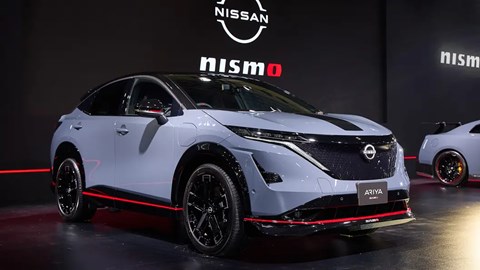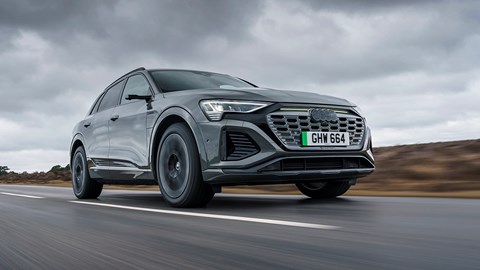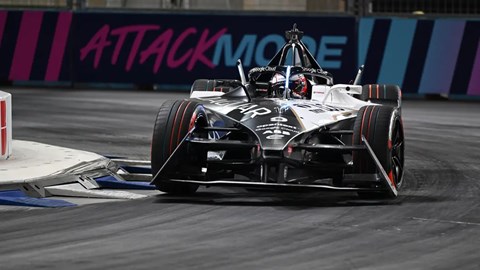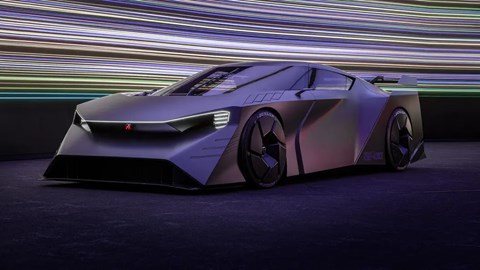► How to navigate the trickiest period in automotive history
► We speak to Nissan’s chief planning officer
► It’s a game of 4D chess out there
‘Being a product planner today is probably the most difficult job in the company,’ Ivan Espinosa, chief planning officer for Nissan tells me on the final day of the Formula E championship. He’s half joking, but there’s some truth in what he says; drivers Oliver Rowland and Sacha Fenestraz will navigate around the tight and twisty London circuit for the next hour or so, but Espinosa must chart Nissan’s course through the most volatile, disruptive period the automotive industry has ever seen.
‘It used to be very easy, because we only had to take care of our customer base, trends and the technology roadmap,’ he tells us in Nissan’s VIP area high above the track. ‘Today you have all that plus your politics, very stringent regulatory conditions, duties, taxation and a bunch of other things that normally we wouldn’t be taking care of.’
For decades, those in the job enjoyed what now look like relatively calm seas, with incrementally improved combustion technology, predictable emissions laws and a more stable geopolitical backdrop. Now all three are erratic, fast-moving targets: there’s a battery technology breakthrough seemingly every six months, governments U-turn on emissions laws on a whim, and the news is filled with conflict every day.

Take the UK, for example. Here, the ban on the sale of combustion cars slipped from 2030 to 2035, but there’s talk of Keir Starmer’s new government moving it back. And consumer demand for electric cars isn’t anywhere near what was originally pitched to boardrooms: demand for electric company cars grew by 42 per cent in January of this year, but private demand suffered a 25 per cent slump in the same period. Car makers have spent millions on EV factories and R&D, only to find that there’s a fresh appetite for combustion cars, especially hybrids.
Conflicts in Ukraine and Palestine have added to anxiety in the financial markets, and we’re perpetually circling an economic meltdown. Put it all together and you have the discombobulating 4D chess board that Espinosa and his counterparts must play on. Product planners need to think several moves ahead – but right now it’s hard to see past the next six months.
Recent developments have prompted different responses from different manufacturers. At Audi, the replacement for the A5 uses combustion powertrains – a bold move from a company that two years ago announced its plans to become an electric-only car manufacturer by 2029. Audi is also considering closing its entire EV manufacturing plant in Brussels, threatening the Q8 e-Tron that’s built there – as well as the circa-3000 highly-skilled employees.

Mercedes and Toyota are back to developing combustion engines after previously signalling a turn towards electrification in its various forms. Mercedes has also dropped the electric EQC from UK showrooms.
This is all food for thought for Jaguar, which recently announced a fresh, EV-only strategy. Turning back isn’t an option; Jaguar boss Rawdon Glover told us. ‘It’s not a short-term decision that you can flex midstream. Any platform decision is probably a 12- to 15-year decision. Because you’ve got five, six years in the gestation and then you’ve got probably a maximum of eight, nine years to leverage the platform once you launch it.’

Jaguar, like Nissan, has been heavily involved in Formula E. But whereas Jaguar has now gone all in on EV, Nissan is being more cautious on its path to, ultimately, an all-electric future. ‘We’re taking a balanced approach because the speed at which the market is electrifying is varying depending on the region,’ says Espinosa. ‘But of course, the final goal is electrification.’
It’s hard to plan several moves ahead, but Espinosa at least has a good mix of chess pieces at his disposal; Nissan will launch 30 new cars globally between now and 2026 with many of them coming to Europe. ‘A lot of those products will be showcasing key technologies like our e-4orce [electric all-wheel drive] systems, and showing next-generation battery technology,’ he tells us. ‘We will also use our e-Power [range extender] technology to keep pushing electrification not only in BEV, but also to get people closer to an electrified experience.’

Amid all these political, economic and technological developments, Espinosa’s team are constantly putting their ears to the ground to focus on the most important factor of all, the consumer. ‘We do a lot of research,’ he tells us. ‘We’re monitoring all of this and being very close to our consumer, because in the end the product and the speed will be decided by the consumer – even if some of our regulations and government movements are pushing through certain things. In the end, the final choice is made by the customer.’